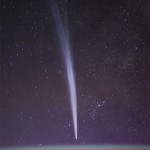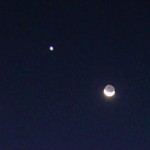I am a bit behind in entry of all the significant astronomical events for 2013. Never fear! Everything important has been entered for January, so I am still ahead of the posting schedule! A few more evenings of blogging and I will have the whole year done.

While C/2011 L4 PanSTARRS is a good comet, comet C/2012 S1 ISON is likely to be a great comet. This comet will pass incredibly close to the Sun and reasonably close to the Earth. If we get lucky, and luck is a significant factor with comets, this could be the comet of a lifetime. Predictions for this comet indicate a possible magnitude well into the negative numbers during November and December. These sort of numbers indicate the comet may be visible in the daytime, and spectacular after sunset. Unlike comet C2006 P1 McNaught in early 2007, this comet will favor viewers in the northern hemisphere!

No great eclipses this year. There are no total lunar eclipses to be seen anywhere, just a partial and two minor penumbrals. An annular solar eclipse visible in the South Pacific that will be visible as a modest partial solar eclipse here in Hawai’i. A hybrid solar eclipse will be visible across the Atlantic and central Africa.
Meteor showers are a mixed situation for the year, some good news, some bad. We will be able to observe the Persieds in a dark sky after the setting of a waxing crescent Moon. The Leonids will occur during full Moon, but are not predicted to be great this year. The Geminids also occur during a full Moon, damping this reliable shower.
2013 will be a great year for watching the sky. Stay tuned to Darker View for alerts on any significant event occurring overhead.

